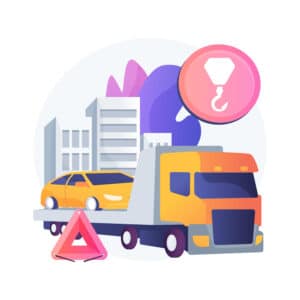Explore and Research
You might already have an idea of an app that you want to build. Before that, try to dive deep into research your target audience and competitors. Things you can ask yourself to make things clearer:
What do you expect your mobile app to accomplish?
Who is your target audience?
How do you want your customers to use interact app?
Do you need mobile app or website solution?
What are your competitors doing? Do they have apps?
And If so, what functions do they offer?
What’s your overall budget for mobile app development?
When do you plan to launch your app?
If you haven’t done so already, put together your app development team with relevant departments (executive, product development marketing & sales, product development) and to discuss the roadmap. With this information in these early stages will smoothen development process.
Establish a strategy
This is an important step in the planning phase of your mobile app.
What problem will your app solve for your customers?
What features will it include?
What is your app’s core appeal?
What do you expect your mobile app to accomplish?
Who is your target audience?
How do you want your customers to use interact app?
Do you need mobile app or website solution?
What are your competitors doing? Do they have apps?
And If so, what functions do they offer?
What’s your overall budget for mobile app development?
When do you plan to launch your app?
If you haven’t done so already, put together your app development team with relevant departments (executive, product development marketing & sales, product development) and to discuss the roadmap. With these information in these early stages will smoothen development process.
Establish clear goals and objectives for your mobile app. This is an important step in the planning phase of your mobile app.
What problem will your app solve for your customers?
What features will it include?
What is your app’s core functionality?
Wireframe and storyboarding
At this stage, you should have a pretty good idea about what your app will look like and what features you want to include. You should also have developed a scope of work—which pieces of the process will be performed in-house and which will be contracted out. Now it’s time to start sketching out your app and creating a storyboard. There are many online tools for wireframing your app; your goal at this point is to develop a clear picture of how your ideas and proposed features will gel together into a functional app. You should also create a storyboard, or roadmap, to demonstrate the connections between each screen and how users will navigate through the app. Keep these pointers in mind as you sketch:
Look for opportunities to incorporate your brand.
Focus on the user experience.
Consider the differences in the way people use a mobile app versus a mobile website.
Developing the app
Developing an app involves a number of processes. Firstly, remember to setup an account with Android Play Store, and Apple’s Apple Developer Program. It’s good to read through the guideline of publishing an app to prevent rejection during submission later on.
You are then ready for the technical phase where coding is involved. If you hired a vendor or outsourcing company to develop for you, remember to sign a non-disclosure agreement and establish a timeline for deliverables.
At this stage, your designer will create the app UI design or actual screens used in your mobile app. These wireframes represent the interface your users will eventually use to interact with your app, so make sure your designs incorporate all the ideas and feedback collected during the discussion phase. After all, you are creating an app you want your customers and target audience to actually enjoy using, so UI/UX details are important.
Testing the system
During the testing phase, this is where the app is finally completed with the app concept and graphic and functional in place. Now you need to rigorously test your app in real-world scenarios to sniff out any technical flaws.
Besides that, you should prepare test scripts to go through the app in sequence. And do a checklist on the positive and negative flow behavior. Some companies might be having a unit test and UI test script for automated testing. Apart from that, You might want to test the app on various phone sizes to see the images/graphics are in place.
After you had gone through the test and confident that the app is working correctly, it’s time to upload your app to the app store and play store and get ready for launching your app.
Monitor and enhance
After your app is released to the public, it’s good to include analytics to track user behavior and app health. For user behavior, analytics help to track how users interact with your app, and what can be improved to produce better user experience. Besides, it can also trace what features most users engage with, and those that are less engagement. For app health perspective, you can check on whether the system produces crashes and should be fixed ASAP.
Finally, have a clear channel for feedback and be responsive to the comments and concerns of your users. A timely update or fix can work wonders for retaining your customers. Pay attention to your analytics and track those KPIs that define success for your marketing objectives.
Once you understand the key steps in the mobile app development circle, you’ll be better prepared to develop an app with the functions and features you need on a budget and timeline you can comfortably manage.



